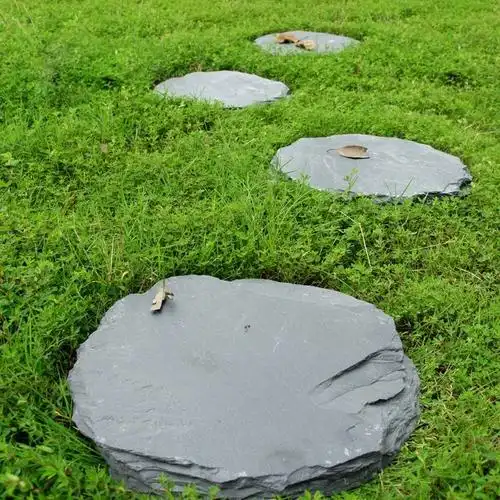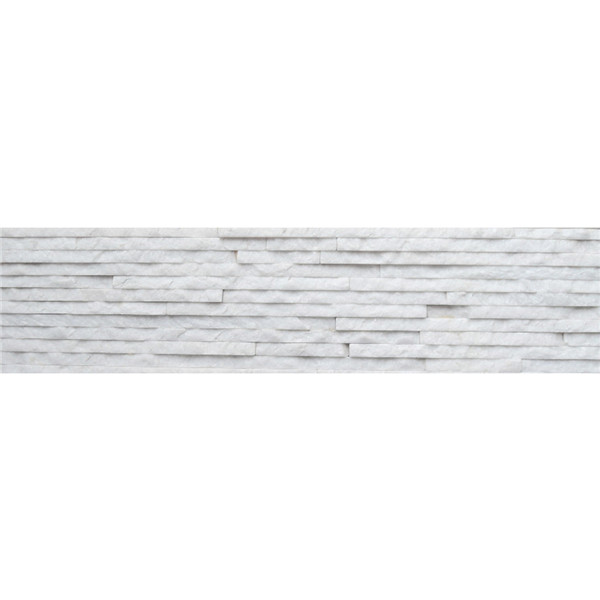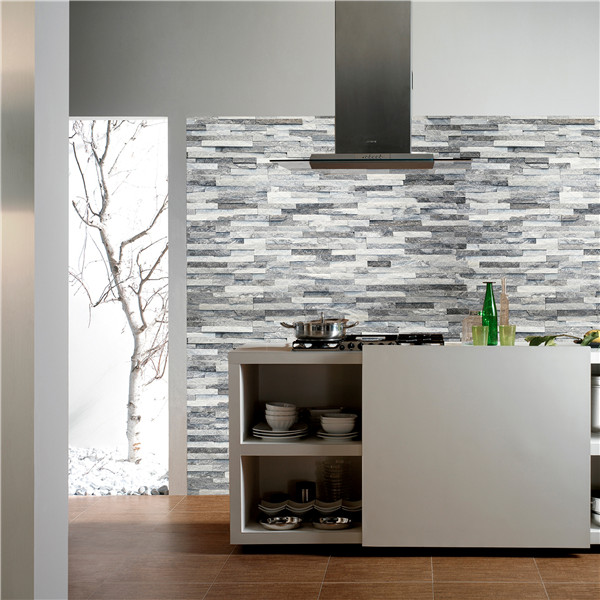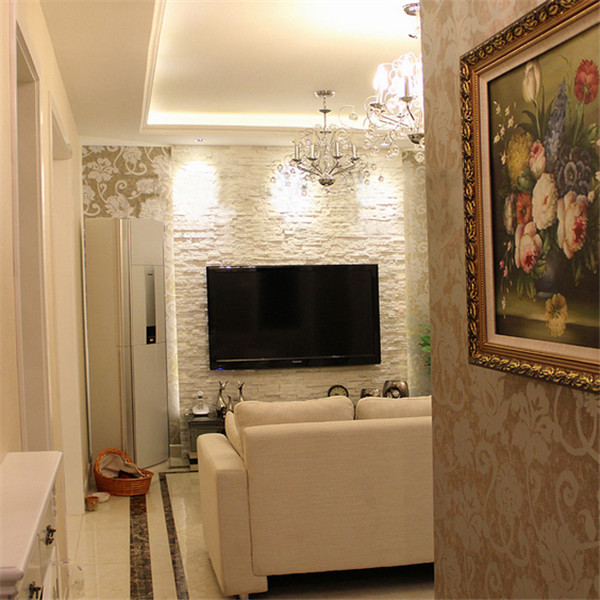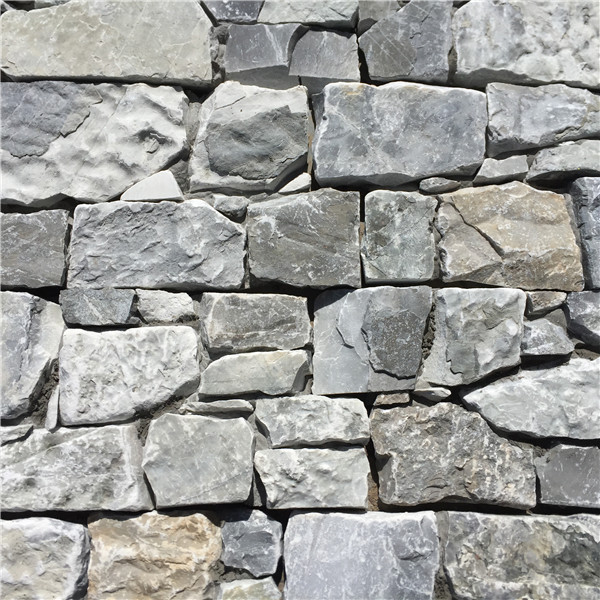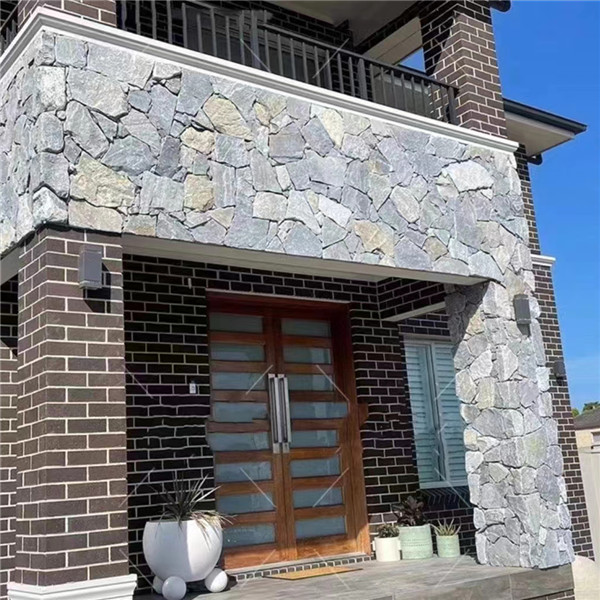
Stepstone Pavers: Transforming Your Outdoor Spaces with Style and Functionality
When it comes to enhancing the look and feel of your outdoor spaces, stepstone pavers are a versatile and practical choice. But what exactly are stepstone pavers, and why should you consider them for your home? Let’s dive into the world of stepstone pavers and uncover their myriad benefits, types, installation process, maintenance tips, cost considerations, and creative uses.
What Are Stepstone Pavers?
Stepstone pavers are flat stones or bricks used to create pathways, patios, garden borders, and other outdoor features. They come in various shapes, sizes, colors, and materials, making them a popular choice for homeowners looking to add both function and flair to their outdoor spaces.
Think of stepstone pavers as the elegant footprints leading through your garden or the sturdy base beneath your outdoor dining set. These elements do more than just provide a path; they add structure, texture, and a sense of order to your landscape. Whether you’re aiming for a sleek modern design or a rustic country vibe, stepstone pavers can help you achieve your vision.
Benefits of Using Stepstone Pavers
Durability and Longevity
One of the standout benefits of stepstone pavers is their durability. Unlike other materials that may wear down over time, high-quality pavers can withstand heavy foot traffic and harsh weather conditions. This means they can last for decades with proper care.
Imagine not having to worry about redoing your walkway every few years. With stepstone pavers, you get a long-lasting solution that can handle everything from summer heat to winter frost. Their robust nature ensures that they stay in place without cracking or shifting, making them a reliable choice for busy households.
Aesthetic Appeal
Stepstone pavers can significantly enhance the visual appeal of your outdoor spaces. With a wide range of designs available, you can choose pavers that complement your home’s style and color scheme. Whether you prefer a rustic look or a modern aesthetic, there’s a stepstone paver to match.
Picture yourself sipping coffee on a beautifully paved patio that perfectly matches your home’s exterior. The aesthetic appeal of stepstone pavers lies in their ability to seamlessly blend with various design elements. From intricate mosaics to simple geometric patterns, these pavers can be customized to reflect your personal taste.
Versatility in Design
The versatility of stepstone pavers is another major advantage. You can use them to create intricate patterns or simple, straightforward pathways. The possibilities are endless, allowing you to unleash your creativity and personalize your outdoor spaces.
Consider using different shapes and sizes to create a unique design that stands out. Mix and match colors to add visual interest or opt for a uniform look for a more polished appearance. The flexibility in design means you can experiment with different layouts until you find the perfect fit for your space.
Environmental Benefits
Stepstone pavers are also an environmentally friendly option. Many pavers are made from sustainable materials, and their permeable nature allows rainwater to seep through, reducing runoff and promoting groundwater recharge.
Think of stepstone pavers as tiny eco-warriors in your backyard. By allowing water to permeate through the gaps, they help maintain the natural water cycle and prevent soil erosion. Plus, many manufacturers now offer eco-friendly options made from recycled materials, making them a green choice for environmentally conscious homeowners.
Types of Stepstone Pavers
Concrete Stepstone Pavers
Concrete pavers are a popular choice due to their affordability and durability. They come in various shapes and sizes and can be customized with different colors and textures.
Imagine a blank canvas that you can paint any way you like. That’s what concrete stepstone pavers offer. They are highly versatile and can be molded into virtually any shape or design. You can even have them stamped with patterns that mimic natural stone or brick, giving you the look you want without breaking the bank.
Natural Stone Stepstone Pavers
Natural stone pavers, such as granite, limestone, and slate, offer a timeless look. They are more expensive than concrete but provide a unique, natural appearance that can’t be replicated.
Think of natural stone pavers as the haute couture of outdoor design. Each piece is unique, with its own texture and color variations. This natural beauty adds an element of sophistication to any space. Whether you choose the rugged look of slate or the smooth finish of limestone, natural stone pavers bring an unmatched elegance to your outdoor areas.
Brick Stepstone Pavers
Brick pavers are known for their classic appeal. They are durable and offer a traditional look that works well in both modern and historic homes.
Picture the charm of an old-world European street or a cozy colonial home; that’s the vibe brick stepstone pavers bring. Their warm hues and familiar rectangular shapes create a welcoming atmosphere. They are also incredibly sturdy and can withstand heavy loads, making them ideal for driveways as well as walkways.
In summary, whether you’re drawn to the modern versatility of concrete, the timeless elegance of natural stone, or the classic charm of brick, there’s a type of stepstone paver to suit your needs. Each material offers its own unique benefits and aesthetic appeal, allowing you to choose the perfect option for your home.
Installation Process
Installing stepstone pavers may seem like a daunting task, but with a bit of planning and some elbow grease, you can achieve professional-looking results. Here’s a step-by-step guide to help you through the process.
Planning and Design
Before you start laying stepstone pavers, it’s crucial to plan and design your project. Consider the layout, size, and shape of the area where you’ll install the pavers. Sketch out your design to visualize the final look.
Think of this stage as the blueprint for your masterpiece. Take measurements of your space and draw a detailed plan. Decide on the pattern you want to create—whether it’s a herringbone layout for added interest or a simple linear design for a more modern feel. Don’t forget to factor in any existing features like trees or garden beds that might affect your layout.
Preparing the Ground
Proper ground preparation is essential for a successful installation. Clear the area of any debris, grass, or plants. Level the ground and compact the soil to create a stable base.
Imagine trying to build a house on quicksand; it wouldn’t last very long, right? The same principle applies here. Start by marking the area with stakes and string to outline your design. Remove any existing sod and dig down to a depth of about 6-8 inches. This will allow room for both the base material and the pavers. Compact the soil using a hand tamper or a plate compactor to create a solid foundation.
Laying the Pavers
Start by laying the pavers in your desired pattern. Use spacers to ensure even gaps between the stones. Once all the pavers are in place, fill the gaps with sand or gravel to secure them.
Now comes the fun part—laying the pavers! Begin at one corner of your marked area and work your way outwards. Place each paver gently onto the base material, making sure it sits level with its neighbors. Use spacers to maintain consistent gaps between each stone, which will later be filled with jointing sand or gravel. This not only secures the pavers but also allows for slight movement without causing cracks.
Finishing Touches
After laying the pavers, add any finishing touches like edging or landscaping. This not only enhances the look but also helps keep the pavers in place.
Think of this step as adding the final brushstrokes to your painting. Edging materials like plastic or metal strips can be installed along the perimeter to keep the pavers from shifting over time. You can also add landscaping elements such as plants, mulch, or decorative rocks to enhance the overall aesthetic. Finally, use a broom to sweep jointing sand into the gaps between pavers, then mist with water to help it settle.
Maintenance Tips for Stepstone Pavers
Once your stepstone pavers are installed, proper maintenance will keep them looking their best for years to come. Here are some essential tips to ensure their longevity and beauty.
Regular Cleaning
Keep your stepstone pavers looking their best with regular cleaning. Sweep away debris and wash the pavers with water and mild detergent as needed.
Think of your stepstone pavers as an outdoor extension of your living space; they need regular cleaning just like your indoor floors. A simple sweep with a broom can remove loose dirt and debris, while a gentle wash with water and mild soap can tackle more stubborn stains. For tougher grime, consider using a pressure washer, but be careful not to damage the surface of the pavers.
Sealing the Pavers
Sealing your pavers can help protect them from stains and weather damage. Apply a sealant every few years to maintain their appearance and durability.
Imagine wearing sunscreen; it protects your skin from harmful UV rays and keeps you looking fresh. Sealing your stepstone pavers works similarly by providing a protective barrier against stains, water damage, and fading from sunlight. Choose a sealant that’s appropriate for your specific type of paver—whether it’s concrete, natural stone, or brick—and apply it according to the manufacturer’s instructions. Reapply every few years to keep your pavers in top condition.
Repairing Damages
If any pavers become cracked or damaged, replace them promptly to prevent further issues. Keep extra pavers on hand for easy repairs.
Think of damaged pavers like a chipped tooth; ignoring it can lead to bigger problems down the road. If you notice any cracks or chips, address them as soon as possible to prevent further damage. Having extra pavers on hand makes this process easier—simply remove the damaged piece and replace it with a new one. For minor cracks, you can use a specialized filler that matches the color of your pavers.
Weed and Moss Control
Weeds and moss can grow between pavers if not properly managed. Regularly remove any unwanted growth and consider using weed barriers or herbicides if necessary.
Imagine weeds as uninvited guests at your party; they can quickly take over if left unchecked. To keep your stepstone pavers looking pristine, regularly inspect for any weed or moss growth and remove it promptly. You can use a weed barrier fabric under the base material during installation to minimize future growth. For persistent weeds, consider using an eco-friendly herbicide.
Preventing Erosion
Erosion can cause pavers to shift or sink over time. Ensure proper drainage and add more jointing sand if needed to maintain stability.
Picture erosion as a slow-moving thief stealing away your hard work bit by bit. To prevent this, make sure your installation has proper drainage to direct water away from your paved areas. If you notice any shifting or sinking of pavers, add more jointing sand to stabilize them. Regularly check for signs of erosion and address them promptly to maintain a level surface.
Cost Considerations
When planning a project with stepstone pavers, understanding the cost implications is crucial. Let’s break down the initial costs and long-term value of using stepstone pavers.
Initial Costs
The initial cost of stepstone pavers varies depending on the material and size of your project. Concrete pavers are typically more affordable, while natural stone options can be pricier.
Think of the initial investment in stepstone pavers as buying quality furniture for your home. While you might pay more upfront, the durability and aesthetic appeal can make it worthwhile. Here’s a breakdown of the average costs:
- Concrete Pavers: Typically range from $3 to $6 per square foot. They are affordable and offer a wide variety of designs.
- Natural Stone Pavers: Can cost between $10 and $30 per square foot, depending on the type of stone. While more expensive, they offer unique beauty and longevity.
- Brick Pavers: Usually fall in the mid-range, costing around $8 to $12 per square foot. They provide a classic look and are highly durable.
Remember, these prices can vary based on your location and the specific suppliers you choose. It’s always a good idea to get multiple quotes and consider both material and labor costs.
Long-Term Value
While the upfront cost may be higher than other materials, stepstone pavers offer long-term value through their durability and low maintenance needs. They can also increase your home’s curb appeal and resale value.
Imagine investing in a high-quality car that requires minimal repairs and retains its value over time. Stepstone pavers offer similar benefits. Their robust nature means fewer replacements and repairs, saving you money in the long run. Additionally, a beautifully paved walkway or patio can enhance your home’s overall appeal, potentially increasing its market value.
Consider these long-term benefits:
- Durability: High-quality pavers can last for decades with minimal maintenance.
- Low Maintenance: Regular cleaning and occasional sealing are usually sufficient to keep them looking great.
- Curb Appeal: Attractive outdoor spaces can make your home more appealing to potential buyers.
By weighing these factors, you can see how the initial investment in stepstone pavers can pay off over time, both in terms of enjoyment and financial return.
Creative Ideas for Using Stepstone Pavers
Stepstone pavers are incredibly versatile and can be used in various creative ways to enhance your outdoor spaces. Here are some ideas to inspire you:
Walkways and Pathways
Create inviting walkways and pathways using stepstone pavers. Whether leading to your front door or through your garden, they add charm and functionality.
Imagine a winding path through a lush garden, guiding visitors with each step. Walkways made from stepstone pavers not only provide a practical route but also add visual interest. You can play with different patterns, such as:
- Stepping Stones: Place large pavers at intervals for a casual, meandering path.
- Herringbone Pattern: Use rectangular pavers in a herringbone layout for a dynamic look.
- Circular Designs: Create circular or semi-circular patterns for a unique focal point.
Adding borders with contrasting materials or incorporating decorative elements like pebbles or mulch can further enhance the beauty of your walkways.
Patios and Outdoor Living Spaces
Transform your backyard into an outdoor oasis with a patio made from stepstone pavers. Add furniture, plants, and lighting to create a cozy retreat.
Picture yourself lounging on a stylish patio, surrounded by greenery and the soft glow of outdoor lights. A well-designed patio can extend your living space outdoors, providing a perfect spot for relaxation and entertainment. Consider these ideas:
- Dining Area: Create a dedicated space for outdoor dining with a sturdy table and comfortable chairs.
- Fire Pit Zone: Arrange seating around a fire pit for cozy evenings under the stars.
- Outdoor Kitchen: Incorporate a grill, countertops, and storage to create a functional outdoor kitchen.
Enhance your patio with potted plants, outdoor rugs, and weather-resistant cushions to make it feel like an extension of your indoor living area.
Garden Borders and Accents
Use stepstone pavers to define garden borders or create decorative accents. They can add structure and visual interest to your landscaping.
Think of garden borders as the picture frame around your landscaping masterpiece. Stepstone pavers can be used to outline flower beds, separate different areas of your garden, or create eye-catching accents. Here are some creative uses:
- Edging: Define garden beds with a neat row of pavers to keep soil and mulch in place.
- Planter Boxes: Build raised planter boxes with stepstone pavers for a modern look.
- Water Features: Incorporate pavers into water features like fountains or ponds for added texture.
By using stepstone pavers creatively, you can enhance the structure and visual appeal of your garden while making maintenance easier.
Driveways
Stepstone pavers aren’t just for walkways and patios; they can also be used to create durable and attractive driveways.
Imagine pulling up to your home on a beautifully paved driveway that complements your landscaping. Driveways made from stepstone pavers offer several advantages:
- Strength: Pavers are strong enough to withstand the weight of vehicles without cracking.
- Style: Choose from various colors and patterns to match your home’s exterior.
- Ease of Repair: If a paver gets damaged, it can be easily replaced without disrupting the entire driveway.
By opting for stepstone pavers, you can create a driveway that’s both functional and visually appealing.
Pool Decks
Stepstone pavers are an excellent choice for pool decks due to their slip-resistant surface and ability to stay cool underfoot.
Picture yourself lounging by the pool on a sunny day, enjoying the comfort of a stylish and safe pool deck. Here’s why stepstone pavers are ideal for this setting:
- Safety: Textured surfaces provide traction to prevent slips.
- Coolness: Certain materials like natural stone stay cooler than concrete in direct sunlight.
- Aesthetics: Choose colors that complement the blue hues of the water for a cohesive look.
With stepstone pavers, you can create a pool deck that’s both safe and beautiful.
Outdoor Steps
Stepstone pavers can be used to build outdoor steps that are both functional and attractive.
Imagine elegant steps leading up to your front door or descending into your garden. Outdoor steps made from stepstone pavers offer several benefits:
- Durability: Pavers can withstand heavy use without wearing down.
- Customization: Create steps in various shapes and sizes to fit your space.
- Cohesion: Use matching pavers for steps and walkways for a unified look.
By incorporating stepstone pavers into your design, you can create steps that enhance both safety and style.
Conclusion
Stepstone pavers are a fantastic choice for anyone looking to enhance their outdoor spaces. With their durability, aesthetic appeal, versatility, environmental benefits, and long-term value, they offer a perfect blend of form and function. Whether you’re planning a new walkway, patio, garden border, driveway, pool deck, or outdoor steps, stepstone pavers can help you create beautiful, functional outdoor areas that you’ll enjoy for years to come.
So why wait? Start planning your stepstone project today and transform your outdoor space into a true masterpiece! With careful planning, proper installation, regular maintenance, and creative design ideas, you can maximize the potential of stepstone pavers and create an outdoor space that’s both practical and visually stunning.




